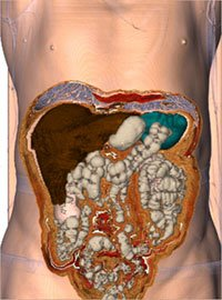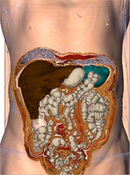Information
- Replaced by: Viola-2004-ImpX2
- Publication Type: Technical Report
- Workgroup(s)/Project(s):
- Date: April 2004
- Number: TR-186-2-04-03
- Keywords: volume rendering, view-dependent visualization, focus+context techniques, level-of-detail techniques, non-photorealistic techniques
Abstract
This paper introduces importance-driven volume rendering as a novel technique for automatic focus and context display of volumetric data. It is a generalization of cut-away views, which - depending on the viewpoint - remove or suppress less important parts of a scene to reveal more important underlying information. We automatize and apply this idea to volumetric data.Each part of the volumetric data is assigned an object importance which encodes visibility priority. It determines which structures should be readily discernable and which structures are less important. In those image regions, where an object occludes more important structures it is displayed more sparsely than in those areas where no occlusion occurs. Thus the objects of interest are clearly visible. For each object several representations, i.e., levels of sparseness, are specified. The display of an individual object may incorporate different levels of sparseness. The goal is to emphasize important structures and to maximize the information content in the final image.
This paper also discusses several possible schemes for evel of sparseness specification and different ways how object importance can be composed to determine the final appearance of a particular object.
Additional Files and Images
Weblinks
No further information available.BibTeX
@techreport{Viola-2004-ImpX,
title = "Importance-Driven Volume Rendering",
author = "Ivan Viola and Armin Kanitsar and Eduard Gr\"{o}ller",
year = "2004",
abstract = "This paper introduces importance-driven volume rendering as
a novel technique for automatic focus and context display of
volumetric data. It is a generalization of cut-away views,
which - depending on the viewpoint - remove or suppress less
important parts of a scene to reveal more important
underlying information. We automatize and apply this idea to
volumetric data. Each part of the volumetric data is
assigned an object importance which encodes visibility
priority. It determines which structures should be readily
discernable and which structures are less important. In
those image regions, where an object occludes more important
structures it is displayed more sparsely than in those areas
where no occlusion occurs. Thus the objects of interest are
clearly visible. For each object several representations,
i.e., levels of sparseness, are specified. The display of an
individual object may incorporate different levels of
sparseness. The goal is to emphasize important structures
and to maximize the information content in the final image.
This paper also discusses several possible schemes for evel
of sparseness specification and different ways how object
importance can be composed to determine the final appearance
of a particular object.",
month = apr,
number = "TR-186-2-04-03",
address = "Favoritenstrasse 9-11/E193-02, A-1040 Vienna, Austria",
institution = "Institute of Computer Graphics and Algorithms, Vienna
University of Technology ",
note = "human contact: technical-report@cg.tuwien.ac.at",
keywords = "volume rendering, view-dependent visualization,
focus+context techniques, level-of-detail techniques,
non-photorealistic techniques",
URL = "https://www.cg.tuwien.ac.at/research/publications/2004/Viola-2004-ImpX/",
}


 paper
paper
